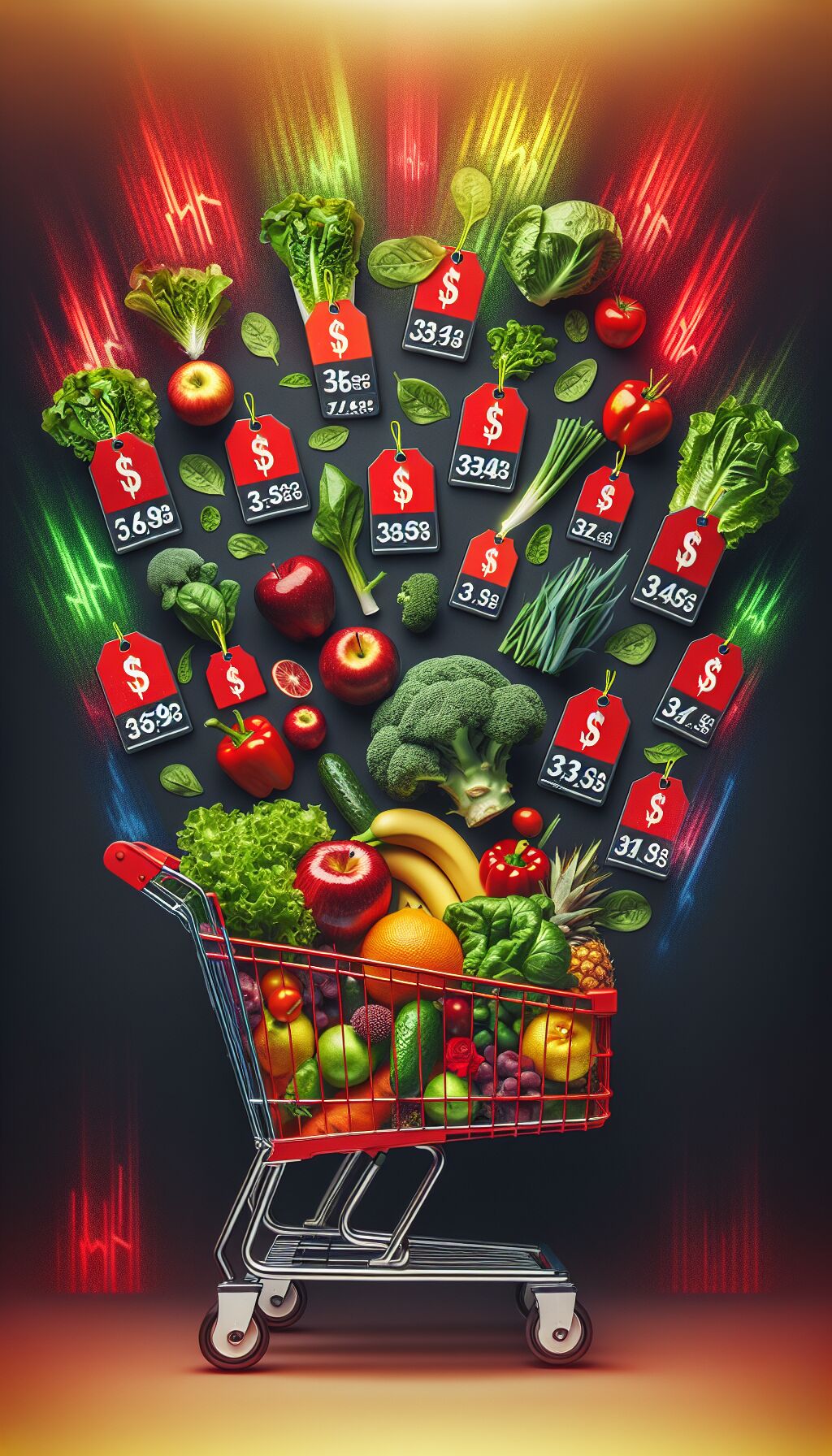U.S. Inflation Overview: Rising Costs Impacting Consumers
Annual Price Increase of 2.6% Reported
In a recent report released by the U.S. Bureau of Labor Statistics, it was revealed that the prices across various sectors increased by 2.6% in the year leading up to October. This rise in inflation marks a significant trend that is shaping the economic landscape of the nation. The primary driver for this increase has been identified as the escalating costs associated with food and groceries, which have left a notable impact on household budgets across the country.
The Food and Grocery Price Surge
The surge in prices for food products has been particularly pronounced, affecting both consumers and retailers alike. Several factors have contributed to this phenomenon, ranging from supply chain disruptions to adverse weather conditions affecting crop yields. As food prices continue their upward trajectory, they are squeezing the budgets of American families, leading to concerns about food security and overall economic well-being.
Understanding the Impact on Households
For many American households, the implications of a 2.6% rise in prices are significant. Food represents a critical expenditure for families, and when prices rise, it can necessitate tough decisions regarding spending in other areas. Many households are reporting a shift in their purchasing behaviors, with some opting for cheaper brands or reducing their overall grocery budgets. This trend has significant ramifications, not only for consumer spending but also for the broader economy.
Contributing Factors to Price Increases
The reasons for the rise in prices are multifaceted. Firstly, the effects of the COVID-19 pandemic continue to reverberate through the economy, with supply chain disruptions causing delays and shortages. Additionally, inflation has been exacerbated by higher shipping costs and labor shortages, which all contribute to elevated prices for goods, particularly in the food sector.
Supply Chain Challenges
Since the onset of the pandemic, global supply chains have faced numerous challenges. Factory shutdowns, transportation delays, and trade restrictions have resulted in a bottleneck effect, driving up costs. The food supply chain, in particular, has been vulnerable, with everything from raw materials to distribution affected. As these supply chain issues persist, it appears that prices will continue to remain elevated.
Weather-Related Impacts
This year has also seen severe weather phenomena impacting agricultural production. Droughts, floods, and hurricanes have taken a toll on crop yields, translating into reduced supply for certain food products. The agricultural sector is acutely aware of these weather-related challenges, and the resulting crop failures can have lasting impacts on food prices. Consequently, consumers may find themselves paying more at the checkout counter as retailers pass on these inflated costs.
Consumer Sentiment and Adjusted Spending Habits
The rising costs of food and groceries have altered consumer sentiment across the nation. As prices soar, many individuals are tightening their belts and making conscious choices about their spending. This change is evident in the way families are planning meals, opting for more cost-effective ingredients, and prioritizing essential purchases over luxuries.
Shifting Shopping Patterns
According to recent surveys, a marked shift in shopping patterns is emerging. Many consumers are opting for bulk purchases to offset rising unit prices, while others are increasingly turning to discount stores. There has been a notable rise in interest in home cooking as families look to circumvent high restaurant prices. These behavioral changes reflect a collective effort to manage household budgets more effectively in the face of rising inflation.
Potential Economic Implications
The implications of rising inflation rates extend beyond household budgets. Economic analysts are closely observing how this sustained price increase will influence monetary policy. The Federal Reserve, tasked with controlling inflation, may need to consider tightening its monetary policy to counteract the rising costs affecting consumers.
Federal Reserve’s Response
In light of this inflationary trend, the Federal Reserve faces a challenge in balancing economic growth with price stability. Historically, the central bank has adjusted interest rates in response to inflationary pressures. If prices continue to rise unchecked, a shift in policy may be necessary to rein in spending and stabilize the economy. However, such measures could also have the unintended consequence of slowing down economic recovery.
The Road Ahead
As we look to the future, the possibility of rising food prices and overall inflation is a reality that consumers will have to navigate. While immediate relief may not be on the horizon, understanding the factors driving these changes can empower consumers to make informed decisions about their spending habits.
Strategies for Consumers
To mitigate the impact of rising prices, consumers can adopt various strategies, such as budgeting effectively, seeking out sales and discounts, planning meals ahead of time, and considering alternatives to higher-priced products. By being mindful of spending habits and making frugal choices, consumers can better position themselves to withstand the financial pressures of inflation.
Conclusion
In summary, the 2.6% increase in prices over the past year, largely attributed to rising food costs, has placed a strain on households across the United States. As consumers adapt to these changes and navigate an evolving economic landscape, the importance of financial literacy and adaptive spending practices will become ever more critical. Policymakers and economic analysts will continue to monitor these trends, aiming to foster a stable economic environment that supports growth while addressing the pressing issue of rising inflation.












